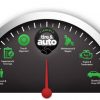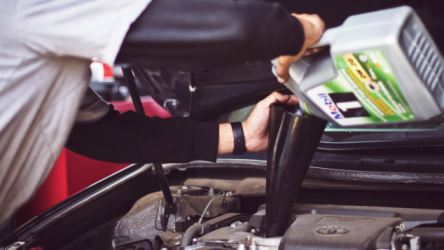
Buying a new car is exhilarating, but it’s also quite a responsibility. In order to ensure a long lifetime of good performance, a car needs to be carefully maintained during its first year off the lot. Here are some of the items that owners of new vehicles need to add to their maintenance checklist.
Carefully Break in Your Car
Yes, just like shoes and baseball gloves, cars need to be broken in too. You have to go easy on your vehicle when you first take it off the lot. It will need to slowly work its way up to its operational limits. Don’t worry though, the break in period will only last for the first 1,000 miles. During that time, try to avoid stressing the vehicle with heavy loads, long sessions of idling, quick accelerations, or speeds higher than 55 mph. Allowing your car’s parts to settle in before straining them will result in their extended performance.
Inside the Car
We often focus on maintaining our engines and vehicle exterior, but the interior needs just as much attention. Parking in the shade has the perk of leaving your car noticeably cooler, but it also helps increase the lifecycle of your vehicle’s interior as the Sun’s UV rays often damage it. If you can’t usually find a parking spot out of the Sun’s gaze, then consider investing in some car shades. You’ll appreciate them years later when your car’s interior still looks new, and the extra comfort will be a welcome bonus. Protectants can be another friend when trying to preserve your upholstery, carpets, and trim, but low-quality ones can have an adverse affect.
Change Your Oil Early
We’ve all heard the old adage that oil should be changed every 3,000 miles or 3 months, and with many of today’s high quality synthetic oils, the 5,000 and 10,000 mile marks are becoming the new standards. But for new cars, these rules don’t apply. You should first change your oil after the initial 20 or so miles in a new vehicle. That might sound unnecessary, but when you take a peek at the oil, you’ll understand why many car care professionals recommend this. Shiny metal flakes and particles will already be clearly visible in your car’s oil. This is a natural occurrence resulting from new engine parts being used for the first time. You should change the oil again at 1,000 miles and then begin a regular routine.
Always Check the Basics
Don’t forget about the most basic aspects of car care. Always check your fluids for all your systems: power steering, brake, transmission, engine coolant, windshield washer, and of course oil. Also keep a close eye on belts, hoses, brakes, and the suspension. Regularly rotating your tires is another habit you should practice on your new car. And make sure to check your tires’ air pressure regularly since being over or under the recommended supply can result in reduced longevity and gas mileage. To increase mpg even further, customarily change your car’s air and fuel filters.While doing all these routine maintenance checks, you want to be sure that any mechanical issues you may find will be covered by your vehicle’s warranty. That’s why it’s essential to thoroughly evaluate auto warranty reviews before you purchase your vehicle. It’s an important part of the car purchasing process that most car owners don’t pay nearly enough attention to. The secret to a long-lasting car is how its taken care of in its first year out on the streets. As long as you use common sense and take the right car care steps, your brand new vehicle will feel just as fresh and powerful for years to come.








